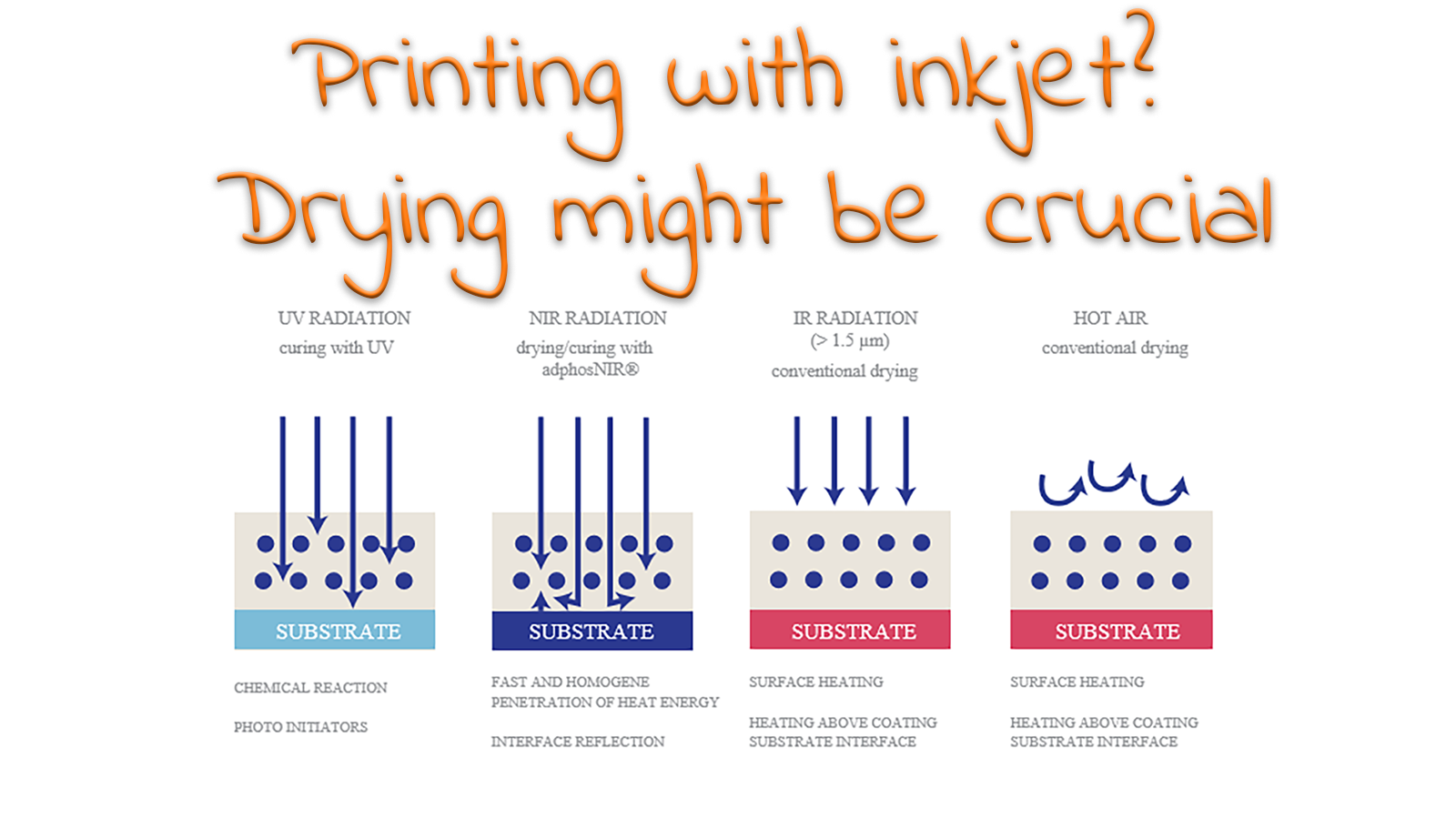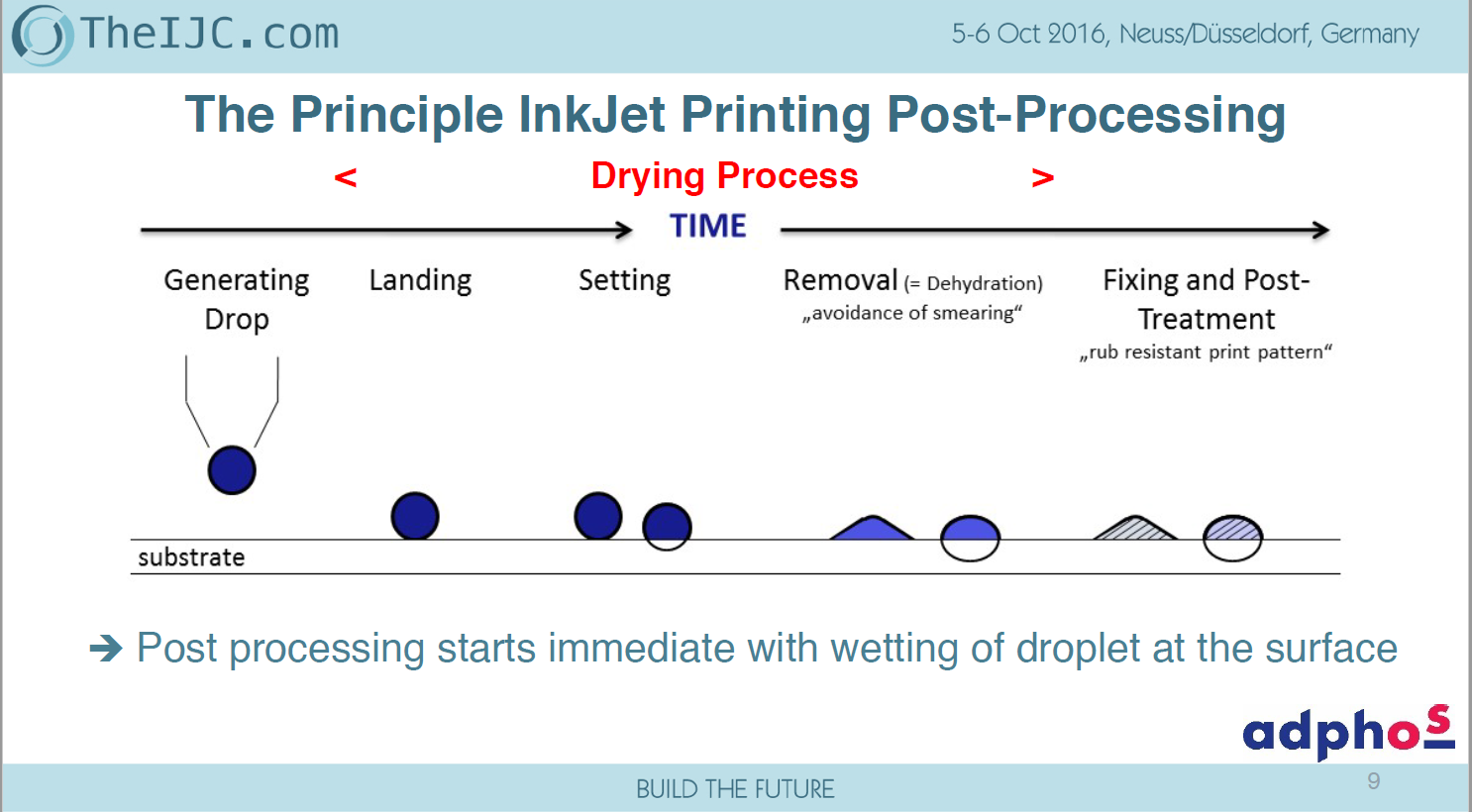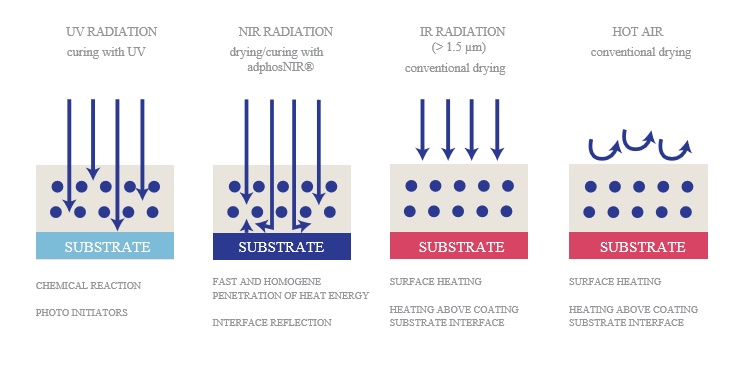
If you have ever spilled your morning coffee on your newspaper, you know how paper reacts to liquids. The paper will swell, it will become wavy and even when ironing it, you can’t get the paper back in the original shape. So, what about printing with inkjet on paper? What is the effect of that ink on the paper substrate? And can we do something about it? These questions were answered during The InkJet Conference last year, in a presentation by Kai K.O. Bär from Adphos.
What ink drops can do…
A very basic property of inkjet ink is that you must be able to jet it. Which means that it must be quite ‘fluid’. If it is too ‘solid’, e.g. like peanut butter, you won’t be able to jet it. But being fluid, it has a number of downsides. When the drop meets the substrate, this might happen:
- splashing (creating satellites)
- wandering around / changing shape
- bleeding
- dot gain
- damaging the substrate: swelling, waviness
- damaging your desired quality or performance
To what amount this happens, depends on the type and quality of the substrate: on plastic, we will only see a two-dimensional bleeding, on paper this might be in three dimensions: if the paper is porous, the ink will penetrate deep into the substrate. That’s one of the reasons why a pretreatment (a primer or a coating), might be necessary.
To avoid a negative impact, we must take all of this into account from the very start. Which includes the design and construction of the printing press. The appropriate post-processing is as important for print quality as the printing heads.

And this might be more complex than you imagine at first: Paper substrates have a certain humidity and, when drying the ink, you need to be sure that the humidity of the paper substrate is not affected, or only minimal. Also, inks can contain a certain amount of solvents, which need to be evacuated for a number of reasons. And you need to prevent condensation: a single drop of moisture can ruin a print job.
So it is quite complicated: You need to dry the ink, without affecting the paper moisture and without having drops of condensation flying around.
Drying techniques
With conventional drying techniques, like hot air and infrared, both ink and substrate are heated. Which is not optimal, especially with paper substrates: The moisture level of the paper will decrease. This low moisture level can be corrected by a ‘re-humidification’ process, but this can’t undo the damage that has been done to the paper fibers during the drying. So it is not a 100% solid solution.
You could use UV-drying, but that only works with special inks, which contain ‘photo initiators’ that will start a chemical reaction to dry the ink.
A more interesting approach is to use ‘near-infrared’ light (NIR). The power behind this solution is that it will only affect the ink, the printed areas. The unprinted areas, the naked substrate, will not – or only slightly – be affected by the NIR light source. Which prevents the damaging of the paper fibers, the lowering of the humidity level of the paper. The NIR drying system can also be used for other types of substrates, it is not limited to paper.

Why is this important?
Printing with inkjet is a rather complex process, with a number of variables that need to be understood and controlled. One of them being the drying process. At TheIJC, this kind of topics will be discussed by the experts in the field. If you take inkjet printing serious, you should be there!
Disclosure: this post first appeared at TheIJC.com blog.


Be the first to comment